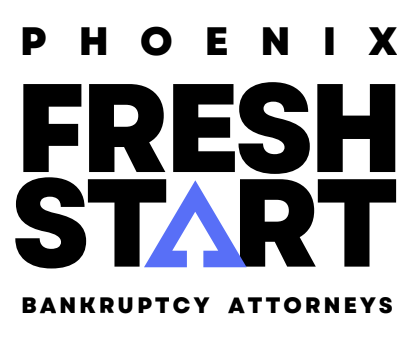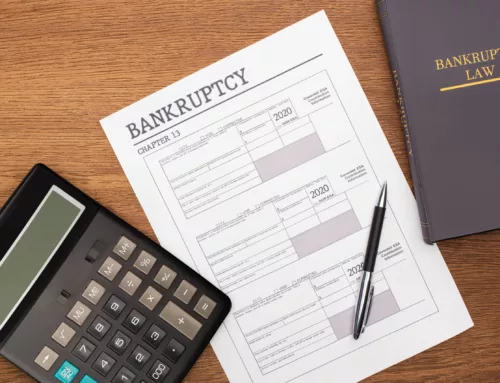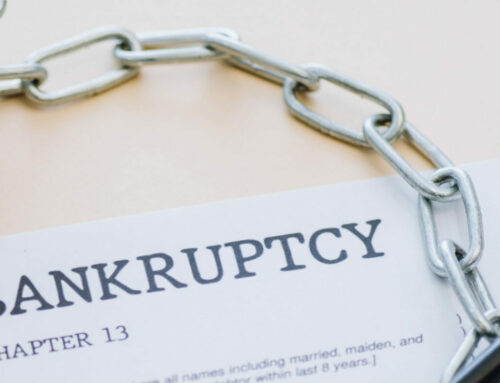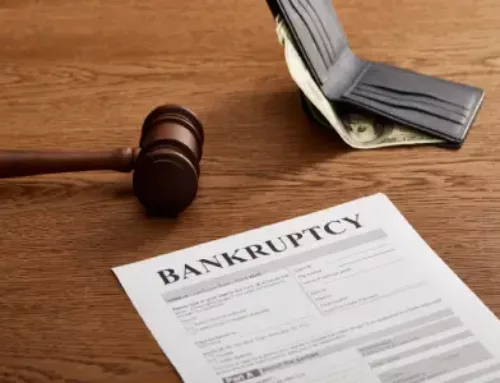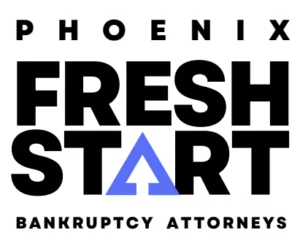Learn How to Clear Medical Debt Through Bankruptcy
Accumulating medical expenses can be very overwhelming. But help is available for potential resolutions. Bankruptcy is one possible solution. Opting for bankruptcy has many advantages and offers a chance for a fresh beginning.
Learn more about how bankruptcy and medical debt relief can help you if you are struggling with overwhelming medical debt.
Short Summary:
- Although medical debt often leads to bankruptcy, there’s no specific “medical bankruptcy” process. You must include all debts in your filing.
- Medical debt commonly arises from unexpected illness, inadequate insurance, or high deductibles. It can harm your credit score. It can also be challenging to settle due to aggressive collection tactics.
- Chapter 7 bankruptcy involves liquidating assets to repay creditors. There is potential to discharge medical debt but impact credit.
- Chapter 13 restructures your debt into a manageable repayment plan. It can discharge medical debt but needs monthly payments.
- Proposition 209 in Arizona offers specific protections for debtors. It includes lower garnishment limits and interest rates to ease the burden of medical debt.
- The automatic stay halts most collection actions during bankruptcy proceedings.
Most individuals in Arizona resort to bankruptcy due to excessive medical debt. It is also the primary cause of bankruptcy filings. Thankfully, bankruptcy can eliminate or make the repayment of medical debt more manageable.
What is Medical Bankruptcy?
The concept of “medical bankruptcy” does not exist in legal terms. Some bankruptcy attorneys use this term to describe bankruptcy from overwhelming medical and doctor-related debts.
Note that it is impossible to file for bankruptcy to address medical debts alone. The bankruptcy petition requires a comprehensive list of all debts.
Medical debts often lead to wage garnishments. But filing for bankruptcy offers a solution to stop medical wage garnishments. Many people use bankruptcy to stop medical wage garnishments. They also use it to handle unexpected financial problems.
What is Medical Debt?
The complex legal and economic landscape surrounding healthcare in the United States can lead to higher medical expenses for many people. That also means medical debt has the potential to accumulate rapidly.
Common reasons for the accumulation of medical debt include:
- Unexpected illnesses
- Emergency medical care
- Inadequate insurance coverage
- Prescription costs
As medical debt piles up, it can affect your credit score. It may result in debt collection efforts. It may also result in legal actions, like wage garnishment.
Moreover, settling medical bills can often prove challenging. This is due to perplexing insurance policies and complex billing codes. They can lead to not receiving essential medical treatment.
Chapter 7 Bankruptcy
Many people facing financial challenges use Chapter 7 of the U.S. bankruptcy code. They do this to shield themselves from creditors. This chapter enables them to end various debts, including medical expenses.
Chapter 7 is often referred to as a liquidation bankruptcy. It involves selling eligible assets by a bankruptcy trustee to settle outstanding debts. Certain state laws exempt specific assets from this liquidation process.
Chapter 7 takes around four to six months to complete. It relieves medical debt. However, it does not generate funds to repay healthcare providers. Most Chapter 7 cases fall under “no asset” filings. Creditors do not receive any payment, but debts are discharged.
One drawback of Chapter 7 is that filers may need to surrender property, including their homes. This bankruptcy type is for individuals who lack enough income to repay creditors.
The bankruptcy court conducts a means test to determine eligibility. It can direct individuals with adequate income to file under Chapter 13.
Chapter 13 Bankruptcy
In Chapter 13 bankruptcy (or wage earner’s bankruptcy), debtors develop a repayment plan. The plan spans three to five years. They use the plan to settle their debts.
Disposable income is allocated for payments. Medical bills may be part of the repayment plan.
A notable advantage is that filers can maintain relationships with healthcare providers. They can do this by repaying at least a part of their medical bills. This is a crucial factor for the debtor’s future health and well-being.
Proposition 209
Proposition 209 took effect in Arizona on December 5, 2022. It brings significant changes to medical debt collection in the state. The proposition focuses on wage garnishments, interest rates, and protections against collections.
Key provisions include reducing the limit for medical debt wage garnishments from 25% to 10% of the debtor’s paycheck. It also has the potential for further reduction. Extreme financial hardship must be proven.
Interest rates for medical debt are capped at 3% or the annual rate set by the Federal Reserve Board, whichever is lower. This differs from the usual 10% limit for other debts. Prop 209 also increases exemptions for debtors.
It raises Arizona’s homestead exemption from $150,000 to $400,000. It also raises the household goods and furnishings exemption from $6,000 to $15,000. The motor vehicle exemption raises from $6,000 to $15,000.
There’s a higher $15,000 limit for debtors with physical disabilities. These exemptions will rise further in 2024 to adjust for the cost of living.
Forgiveness of Hospital Debt
People with unpaid hospital bills and no money to pay them may get hospital debt forgiven. Many hospitals are mandated to offer payment assistance programs designed for low-income patients.
These programs adhere to income criteria aligned with the federal poverty level. For instance, a debtor with an income at 100% of the federal poverty level can expect a larger bill reduction than a debtor with an income at 400% of the federal poverty level.
A medical debtor may need to give documents like tax returns, pay stubs, and bank statements to get hospital debt forgiveness.
What are the Alternatives for Medical Debt Relief?
There are several options to consider for alternatives to medical debt relief. But this applies to individuals with a favorable credit score.
- Negotiation: Negotiating proactively with a creditor is an effective response. It is crucial to be well-prepared before entering discussions. Avoid divulging information prematurely.
Some medical providers may be open to waiving or discounting some bills. But patients often encounter pricing disparities and billing errors in the medical field. Getting help from a skilled negotiator increases the likelihood of securing a reduced medical bill.
- Exploring Assistance Programs: Many hospitals provide financial assistance programs that offer free or reduced care based on income. Nonprofit hospitals also extend aid to those in need. Note that some nonprofit hospitals may lack consistent accountability. They can fail to inform eligible individuals of available care.
Charitable hospitals may also let some individuals make upfront payments. A thorough research on a hospital before seeking assistance programs is advisable.
- Debt Management Plan: Seeking advice from a credit counseling agency before medical bills become overwhelming can be beneficial. Nonprofit credit companies can assist in creating a plan to repay medical debt. They can offer extended repayment terms with lower interest rates and no fees.
What are the Benefits of Bankruptcy for Medical Debt?
The advantages of filing for bankruptcy when dealing with medical debt include:
- Automatic Stay: As soon as the bankruptcy proceedings start, the court issues an automatic stay order. That halts debt collection actions. An automatic stay can help individuals address their financial situation. It relieves the added pressure of ongoing collection efforts.
- Discharge of Medical Debt: Near the end of bankruptcy proceedings, individuals may be relieved of their legal obligation to pay certain qualifying medical debts. This discharge alleviates the burden of outstanding medical bills. It provides a path to financial recovery.
- Taking Control of Finances: Bankruptcy empowers consumers to regain control over their financial situation. It prevents the situation from spiraling further out of control. Bankruptcy is a great opportunity to rebuild financial health. It also helps move forward with a more manageable financial outlook.
Seek Guidance From A Knowledgeable Bankruptcy Attorney in Phoenix, AZ
Confronting medical debt and navigating the complexities of bankruptcy law can be challenging. That is more so without the guidance of an experienced bankruptcy attorney.
Our attorneys at Phoenix Fresh Start Bankruptcy Attorneys can analyze the advantages and disadvantages of your case. We will guide you to make well-informed decisions on bankruptcy and medical debt relief.
Our bankruptcy law firm is ready to guide you through medical debt challenges. Our legal team is dedicated to providing relief and restoring your financial confidence in Phoenix, AZ.
We will help you regain control of your finances and find peace of mind. Contact us today for a free, no-obligation, stress-free financial analysis.
